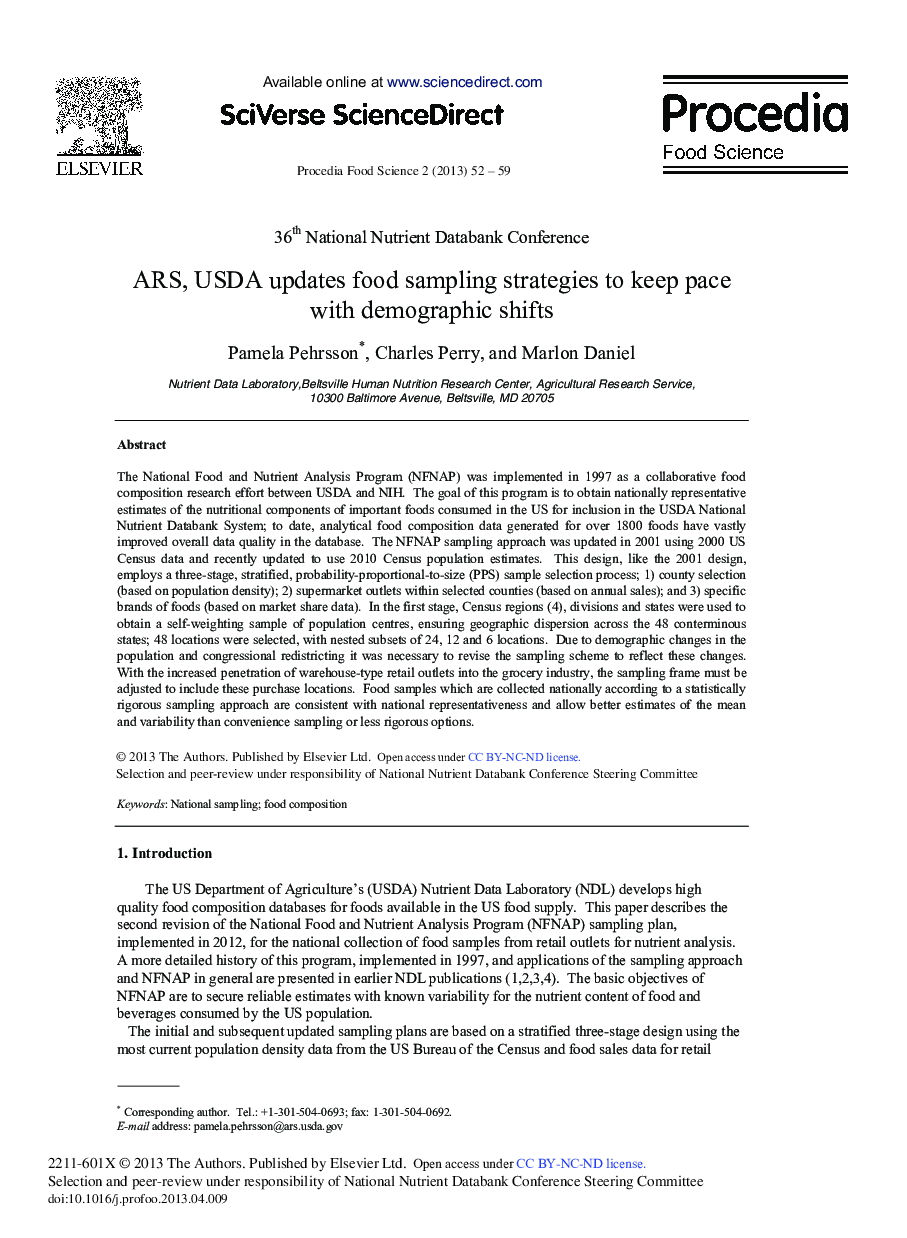| کد مقاله | کد نشریه | سال انتشار | مقاله انگلیسی | نسخه تمام متن |
|---|---|---|---|---|
| 1265488 | 1496854 | 2013 | 8 صفحه PDF | دانلود رایگان |
The National Food and Nutrient Analysis Program (NFNAP) was implemented in 1997 as a collaborative food composition research effort between USDA and NIH. The goal of this program is to obtain nationally representative estimates of the nutritional components of important foods consumed in the US for inclusion in the USDA National Nutrient Databank System; to date, analytical food composition data generated for over 1800 foods have vastly improved overall data quality in the database. The NFNAP sampling approach was updated in 2001 using 2000 US Census data and recently updated to use 2010 Census population estimates. This design, like the 2001 design, employs a three-stage, stratified, probability-proportional-to-size (PPS) sample selection process; 1) county selection (based on population density); 2) supermarket outlets within selected counties (based on annual sales); and 3) specific brands of foods (based on market share data). In the first stage, Census regions (4), divisions and states were used to obtain a self-weighting sample of population centres, ensuring geographic dispersion across the 48 conterminous states; 48 locations were selected, with nested subsets of 24, 12 and 6 locations. Due to demographic changes in the population and congressional redistricting it was necessary to revise the sampling scheme to reflect these changes. With the increased penetration of warehouse-type retail outlets into the grocery industry, the sampling frame must be adjusted to include these purchase locations. Food samples which are collected nationally according to a statistically rigorous sampling approach are consistent with national representativeness and allow better estimates of the mean and variability than convenience sampling or less rigorous options.
Journal: Procedia Food Science - Volume 2, 2013, Pages 52-59
